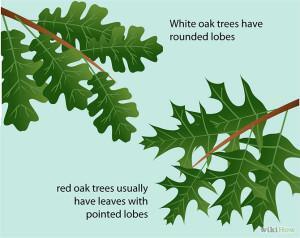Acorns
Acorns
Oak trees and acorns are abundant in Western Pennsylvania. Besides being food for squirrels and grinnies (chipmunks), I had never given them much thought until I began doing research for the book.
I have learned that our ancestors did not only eat acorns, they were a staple food. With all the processing our food goes through before it gets to our table, perhaps we should turn our attention back toward natural products.
 Photo courtesy of Wiki-How
Photo courtesy of Wiki-HowRaw acorns contain tannic acid that must be leached before they can be eaten. Gathering later in the fall will naturally work to some degree to remove the tannin; however, the longer they are available, the more likely they will be gathered by animals or infested by weevils. Avoid green acorns and acorns with their ‘hats’ still attached as they have dropped before they were ripe, and those that appear dusty have begun to rot and should be avoided as well. Generally, yellowish nutmeats are the highest in quality.
Different oak species produce acorns with specific qualities. Identify oaks by their leaves. Rounded leaves indicate white oak, while pointy leaves signal red oak.
Red Oak acorns have a higher tannin content and tend to be more bitter. They are also higher in protein making them valuable for their oils. The fat in them will turn rancid fast, so use them quickly.
White Oak acorns are sweeter, less bitter, drier, and better for flour.
Begin processing acorns by removing the shell. The easiest way is to simply whack them with a hammer. There are several ways to remove the tannings. In the wild, bag the acorns and let them sit in a rushing stream overnight. In the kitchen, after shelling place the acorn meats into a stockpot full of water. As soon as the water boils, drain, and repeat at least 4 times until the water is clear enough to see the nuts in the bottom of the pot. Be sure to save the water to use as a natural antiseptic, to relieve poison ivy, or to heal rashes and minor burns.
Once your acorns are free of tannins, dry them to avoid rotting. Place them in a single layer on a sheet and roast at 250-300 for about an hour or allow them to dry in the sun.
Sources:
How to Use Acorns for Food. Viewed: 22, February, 2015. http://www.wikihow.com/Use-Acorns-for-FoodShaw, Hank. Hunt, Gather, Cook. Finding the Forgotten Feast. Rodale Books (2011) PrintThe post Acorns appeared first on Juliette Godot.



